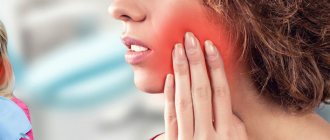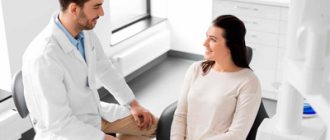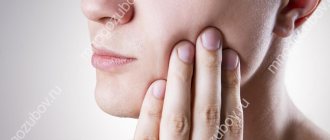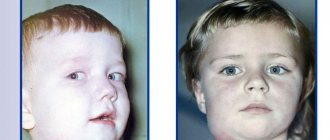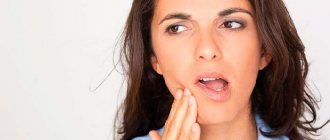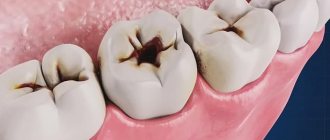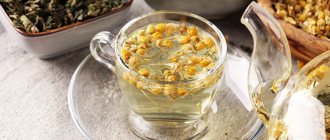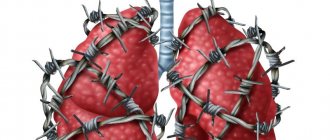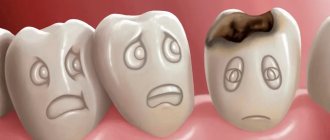Acute low back pain is the most common type of back pain, which affects almost half of people who lead a sedentary lifestyle, are overweight or have chronic diseases of the lumbosacral spine (for example, osteochondrosis).
Acute lower back pain
Such pain can be aching, shooting, stabbing, dagger-shaped, burning. The intensity depends on the cause of occurrence, the presence of inflammatory processes, tonic tension of the paravertebral (paravertebral) muscles and the age of the patient.
The intensity of pain depends on the causes that caused it
In elderly and senile people, pain is usually more severe, which is associated with the natural processes of aging and drying out of the cartilage tissue of the spine. You can cope with acute pain with the help of medications, but the prevention of back diseases is of great importance in shaping a further favorable prognosis.
Prevention of back diseases is no less important than timely treatment
How to cope with symptoms?
Symptomatic treatment of acute lower back pain includes medications and traditional methods aimed at reducing pain and restoring sufficient mobility in the lumbar region. The use of pain-relieving ointments, creams, tablets, as well as alternative medicine recipes allows you to get rid of lumbago in the back, pain when bending and turning, and muscle stiffness, which almost always occurs simultaneously with painful sensations.
Medicines (tablets)
Analgesic drugs are the main pharmacological group of drugs that are used to eliminate symptoms of severe and acute lower back pain. For shooting pains (lumbago), the most effective is Analgin (metamizole sodium). To reduce the intensity of pain, it is prescribed 1 tablet 2-3 times a day for 3-5 days.
"Analgin"
When prescribing drugs based on metamizole sodium, it is necessary to take into account the degree of their toxicity, therefore “Analgin” and its analogues (for example, “Baralgin”) are not recommended in the period after infectious diseases, as well as for persons with weakened immune systems, including pregnant and lactating women women.
"Baralgin"
If lower back pain is combined with an inflammatory process, non-steroidal anti-inflammatory drugs are used to relieve it. The most effective drugs from the NSAID group, as well as their dosages, are shown in the table below.
NSAIDs for acute back and lower back pain
| Name (active substance) | Daily dosage | Maximum duration of use (unless otherwise prescribed by a doctor) |
| 400-800 mg up to 2-3 times a day. | 5 days. |
| 10 mg up to 4 times a day. | 5-7 days. |
| 100 mg 2 times a day. | 10 days. |
| 7.5 mg (1 tablet) per day. | 5-10 days. |
| 50 mg 2-3 times a day. | 3-7 days. |
Note! Paracetamol, although not classified as an NSAID, also has a fairly pronounced analgesic effect. It is better to take it in combination with ibuprofen (Ibuklin) 1 to 3 times a day.
"Ibuklin"
Ointments and gels
It is almost impossible to relieve acute pain in the lumbar region with ointments alone, therefore, during the first 2-3 days, local dosage forms are recommended to be combined with tablets or injections. Ointments based on diclofenac and ketorolac have a pronounced analgesic effect: they should be applied to the sore spot 2-4 times a day for 7-10 days in a row (even if the pain stopped a few days after the onset of the attack).
Acute pain caused by radiculitis can also be reduced with the help of warming ointments (Capsicam, Finalgon) and products containing camphor oil or camphor alcohol, as well as bee or snake venom.
"Capsicam", "Finalgon")
Below is a list of well-proven topical medications that will help you quickly get rid of back pain and restore the mobility of the damaged spinal segment.
Power training
Of the various strategies listed here, strength training is by far the one that most patients are least inclined to try. However, this method is effective for a wide range of diseases of the musculoskeletal system.
For example, the best treatment for Achilles tendinopathy is relatively simple—gradually increasing the load on the calf muscles through resistance exercises. For several types of knee pain, quadriceps strengthening is the most evidence-based treatment. Adding strength training to other lower extremity muscles can help even more. The same is true for the lower back, cervical and shoulder joints.
You can read about what pain is here.
The bottom line is that for many types of musculoskeletal pain, you won't find a treatment that works better, on average, than simply strengthening the muscles around the painful area to avoid worsening symptoms. This simple approach is sometimes called “just load it” and is advocated by many respected physical therapists.
Why does this work? We can't be sure, but it may involve one or more mechanisms:
- Exercise-induced analgesia through activation of endogenous endocannabinoid and/or opioid systems.
- Physiological changes such as reactivation of tissue healing, improvement of metabolic or vascular support of tissues, or reduction of inflammation.
- Mechanical changes, such as increased ability to use good technique, absorb force, and/or stabilize joints.
- Psychological changes such as the placebo effect, increased optimism and a sense of self-efficacy.
For best results, you should consult with a professional, especially a physical therapist who knows how to exercise with pain. The process doesn't have to be extremely complicated, and you can figure it out on your own if you understand the basic principles of resistance training. The goal is to increase strength without increasing pain. One tool is isometric exercises, which involve tensing your muscles without shortening them, much like pushing against a wall as hard as you can. Simply find the joint angle that gives you the greatest muscle tension to discomfort ratio and work until you get tired.
To ensure that the exercise does not aggravate your pain, it is recommended to avoid pain levels above moderate discomfort (up to 4 on a scale of one to ten). Also, make sure your pain doesn't get worse immediately after doing the exercise or the next day. There's a good chance you'll feel better almost immediately because... intense muscle tension is a good way to induce exercise-related analgesia.
Even if you manage to strengthen your muscles, but the pain does not decrease, then look at it positively, because you will still function better.
Note
- There are no magic muscles (like the glutes or transverse abdominis) that need special attention, and there are no “bad” muscles (like the quads or pecs) that shouldn't be strengthened.
- There is no one training method (e.g., kettlebells, barbells, machines) that is significantly superior to others. Focus on the basic principles, such as progressive overload, and use whatever method makes the most sense for your situation.
- A common mistake is simply not working hard enough. Make sure you really challenge your ability to generate force - work hard to get close to your safe limit or get well tired.
Acute pain after a fall or injury
A lower back bruise after a fall or blow is the most common back injury, from which even the most careful and cautious people are not immune. The high-risk group includes athletes, people engaged in heavy physical labor (loaders, storekeepers), and children. You can also get a lower back injury if you fall on slippery surfaces (wet floors, ice) or in public transport during emergency braking.
No one is safe from accidental falls
Before providing assistance to a bruised victim, you must ensure that there are no fractures or dislocations. The difference between a bruise and a fracture is damage only to soft tissues (skin, musculo-ligamentous apparatus), manifested mainly by swelling, hematomas and bruises (a symptom of damage to capillaries and small blood vessels).
Improved motor control
Physical therapists often seek to correct "dysfunctional" movement patterns. However, this is not entirely clear, for example, some studies show that exercises to improve motor control do reduce pain, but the interesting thing is that this can happen even in the absence of improvement in motor control. Additionally, most of our ideas about what movements are dysfunctional are guesswork and do not fully reflect the complexity and variability of human movement.
First aid and treatment
If a person, after a fall, complains of severe acute pain in the lower back and cannot bend forward or backward, first aid measures must be taken. The patient should be placed on a hard or semi-rigid horizontal surface (mobility should be limited as much as possible) and a cold compress should be applied to the site of the bruise. To do this, you can use a heating pad with ice or a piece of frozen meat from the freezer.
Ice pack
To avoid hypothermia of the pelvic organs, the source of cold must be placed in a piece of dense fabric. You need to keep the compress for no more than 15-20 minutes. If the pain does not go away, you can repeat the procedure after the same time interval.
It is recommended to use ointments and gels from the NSAID group as painkillers and anti-inflammatory drugs: Diclofenac, Voltaren, Ibuprofen, Ketorol.
"Diclofenac"
For bruises, bruises and hematomas, the use of angioprotectors, for example, troxerutin, is indicated. Drugs in this group help restore damaged blood vessels, increase the elasticity of capillary walls, relieve inflammation and eliminate swelling at the site of injury.
"Troxerutin"
Heparin ointment has a similar effect. It is recommended to apply these drugs 2 to 4 times a day (can be combined with NSAIDs).
Heparin ointment
If inflammation is severe, the doctor may prescribe a course of hormonal therapy (in the form of ointments or injections). The most prescribed drugs in this group:
- "Hydrocortisone";
"Hydrocortisone" - "Dexamethasone";
- "Prednisolone";
"Prednisolone" - "Cortisone".
If the pain is too severe and severely limits a person’s ability to move and self-care, it is necessary to call an ambulance.
Rest
If your Achilles tendon begins to hurt after a few weeks of intense running, you can assume that the underlying cause of the pain is excess mechanical stress. Therefore, rest is a logical option to solve the problem (especially in the first stages). Most people understand this well, but some neglect this simple rule.
And that's why:
- This may be due to the fact that some people simply do not like to rest. Of course, by pushing themselves regardless of their condition, they can harm themselves.
- Another reason is the inability to notice that the load has become excessive. Obviously, 5km a week is more than nothing, but the transition from 10km to 15km may be less noticeable. Increased physical stress is even more difficult to notice when it is associated with other activities. For example, adding two low-intensity workouts to your weekly running program may require reducing your overall running volume.
- The most difficult thing to notice is the additional “load” in the form of emotional stress, which has a real physical effect on the body, an example of which may be an increase in pain sensitivity. So your back can easily handle 20km of running a week when you're not under any emotional stress, but it starts to hurt when you're stuck at work or don't get enough sleep.
To make sure you're giving your body enough opportunity to recover, pay attention to the following things.
- If an activity causes pain, don't do it (at least for a while) or do it to a lesser extent.
- Avoid overtraining and manage your training load. This may require some expert level knowledge, for example if you are an athlete.
- Try to reduce emotional stress.
- Optimize your sleep and recovery.
Note
- Taking a lot of rest is not always a good thing.
- If you've rested long enough to recover, then it's probably time to move on to a more active phase of treatment.
Manual therapy
There is evidence that manual therapy helps with musculoskeletal pain in the short term. Yes, this is true, but there are some nuances.
First, recognize that manual therapy works by modulating the nervous system's sensitivity to pain, not by "fixing" tissue problems such as malaligned vertebrae, fascial adhesions, etc. If you feel better after chiropractic therapy, know that the neurophysiological mechanisms that explain its effectiveness are not much different from what makes most people feel good after strength training or aerobic exercise, which shows good results in the long term.
On the other hand, there is no doubt that for some people, skillful and sensitive human touch represents something unique. If you respond well to what Diane Jacobs calls “human primate social grooming,” then of course you will prefer manual therapy. But don't think that this is necessary to "fix" some problem in your body, like a mechanic fixing a car.
Improved overall health
Anything you can do to improve your overall health can help with musculoskeletal pain, especially when the pain is chronic and comorbid with other chronic diseases such as obesity or autoimmune diseases.
In this case, working to improve your overall health may be the best way to manage your pain. This means eating a balanced diet, maintaining a work-rest schedule, walking outdoors, aerobic exercise, minimizing emotional stress, and getting good sleep.
Note
Make sure your interest in healthy living doesn't turn into unhealthy behavior.
Sexually transmitted infections
Characteristic signs of sexually transmitted infections (STIs): pain during urination, vaginal discharge, vaginal bleeding between periods. The most common types of STIs are gonorrhea and chlamydia. The final diagnosis can be made by a doctor after laboratory tests. If you are diagnosed with a sexually transmitted disease, your partner should also be tested.
Myofascial pain syndrome (MPS)
Quite often, the source of pelvic pain is the muscles and ligaments. This condition is called myofascial pain syndrome and has the following causes:
- muscle and ligament sprains;
- bruises;
- frequent minor muscle injuries, for example, during heavy physical work or sports;
- overstrain of the pelvic muscles, when you have to maintain an uncomfortable position for a long time;
- Sometimes the cause is hypothermia and frequent stress.
There can be many causes of pelvic pain. Sometimes it is difficult for a doctor to determine the cause of this condition without additional examinations. If you are worried about pelvic pain, make an appointment with a gynecologist at ProfMedLab, our phone number: +7 (495) 120-08-07.
Need more interesting articles:
13 reasons to get tested for hormones 02/08/2017
Working night shifts increases the risk of developing breast cancer 07/08/2019
Why is it good to cry? 05/19/2017
Change your contraceptive method
In some cases, if you have a headache, it should be treated not by prescribing medications, but, on the contrary, by stopping taking them.
For example, patients suffering from migraine with aura should avoid taking combined oral contraceptives due to the high risk of ischemic stroke due to their ability to provoke thrombogenesis. For women suffering from severe headaches and migraines without aura, the risks are lower, but for them exogenous hormones and estrogen withdrawal may also be triggers.
Therefore, if you notice that after starting to take oral contraception, headaches have become more frequent and intense, this is a reason to think about changing your method of preventing pregnancy.
Sources:
- Scripter C. Headache: Tension-Type Headache. FP Essent. 2018 Oct;473:17-20. PMID: 30346680.
- Espí-López GV, Zurriaga-Llorens R, Monzani L, Falla D. The effect of manipulation plus massage therapy versus massage therapy alone in people with tension-type headache. A randomized controlled clinical trial. Eur J Phys Rehabil Med. 2016 Oct;52(5):606-617. Epub 2016 Mar 18. PMID: 26989818.
- Marks DR, Rapoport AM. Practical evaluation and diagnosis of headache. Semin Neurol. 1997;17(4):307-12. doi: 10.1055/s-2008-1040943. PMID: 9474710.
- MacGregor E.A. Contraception and headache. Headache. 2013 Feb;53(2):247-76. doi: 10.1111/head.12035. PMID: 23432442.
- Allais G, Gabellari IC, De Lorenzo C, Mana O, Benedetto C. Oral contraceptives in migraine. Expert Rev Neurother. 2009 Mar;9(3):381-93. doi: 10.1586/14737175.9.3.381. PMID: 19271947.
- Friedman DI. Headache and the eye. Curr Pain Headache Rep. 2008 Aug;12(4):296-304. doi:10.1007/s11916-008-0050-1. PMID: 18625108.
Published on the portal health.mail.ru
